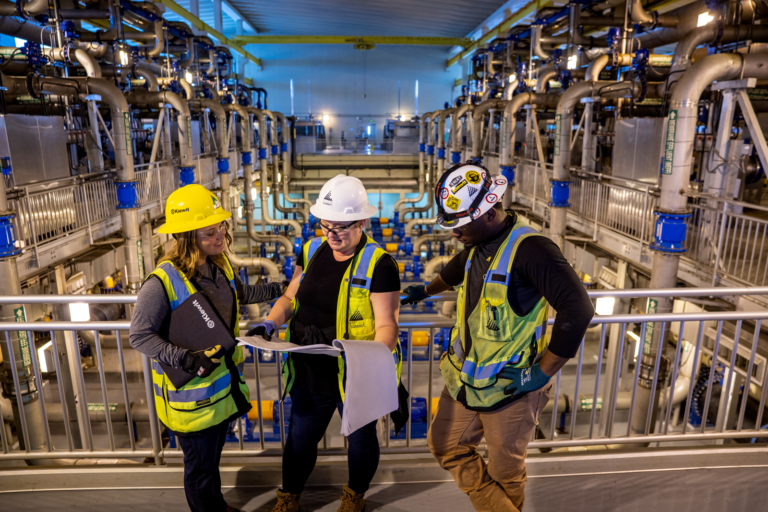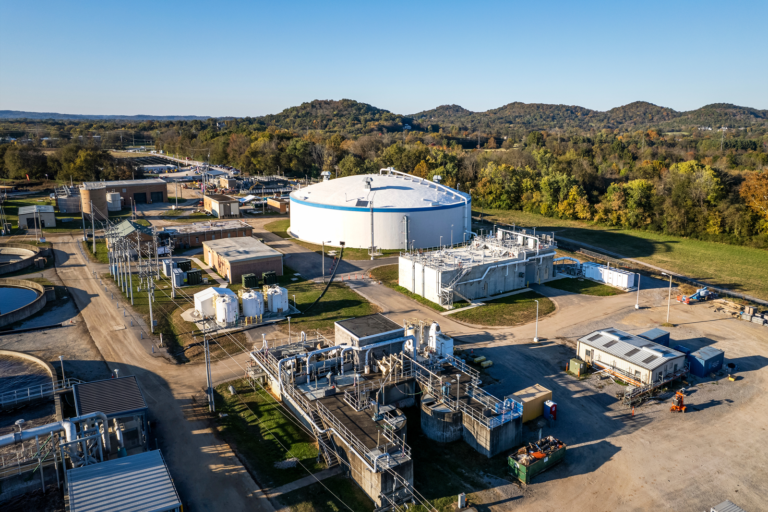Collaborative Delivery
A Better Way To Build
The Benefits of Collaborative Delivery
- Improve Cost and Schedule Performance By Up To 20 percent
- Finish Designs in 77 percent less time than traditional contracting methods
- Reduce Construction in 25 percent less time than a standard DBB delivery
Committed to what's right
Collaborative delivery overlays building and engineering to create a more efficient and engaging project schedule. Instead of a transitive model where progress is passed from design to construction, this approach invites all parties to develop innovative solutions to potential obstacles.


Beyond Design-Bid Build
Collaborative project delivery offers agencies a more agile contracting practice compared to traditional Design-Bid-Build (DBB). DBB is an intentionally linear process intended to award contracts to the lowest bidder. Owner awards each phase to a separate contractor. The contractor performs their job, then exits the project. As a result, challenges get addressed in a vacuum without the next stage in mind.
Owner, Builder, and Engineer. Three Focuses, One Integrated Team.
Together, this project-focused unit can:
- Prioritize value engineering
- Explore innovations that impact constructability
- Improve design quality
- Increase stakeholder involvement
- Optimize schedules and timelines
- Allocate risk properly
- Create a more realistic final cost
- Reduce change orders and overruns
Because collaborative delivery executes both stages in tandem, these methods rely heavily on ongoing communication between owner and contractor. By focusing evaluation criteria on quality and qualifications rather than the lowest possible price, owners are free to concentrate on long-term goals like sustainability, quality, and innovation, resulting in selecting the best contractor team for the job and, ultimately, the best possible value per dollar.
Common Collaborative Project Delivery Models
Collaborative delivery consolidates the vendor ecosystem and gets engineers and builders involved earlier in the project planning process. The result is a process that allows owners, contractors and engineers to mold the outcome to the project’s needs, not the other way around.
Construction Manager at Risk
An entry-level solution for traditional DBB owners
Construction Manager at Risk (CMAR) is a construction-focused progressive delivery method that integrates the owner, engineer and builder into one team to develop the most efficient cost and schedule. Unlike other collaborative delivery models, CMAR resembles a more traditional DBB workflow, with one contract for design and one for preconstruction and construction services. The collaboration comes in when CMAR contracts bring specialized construction voices and key stakeholders into the design conversation, ultimately creating a close-knit group of key stakeholders and vendors responsible for the final execution. Beyond any notable shifts in direction, the “at-risk” portion of CMAR applies when the contracting partner shares an expected cost and is financially liable if the deliverables exceed that estimate.
Progressive Design-Build
A highly integrated team around a shared vision
Progressive Design-Build (PDB) jobs connect owners with a single design-build partner responsible for managing and executing the project from start to finish. These contracts unite the owner, engineer and builder in a collaborative, iterative relationship built on managed risk and mutual respect. After the qualifications and experience-based selection, the vendor leads every stage of development – supporting in the planning, design, procurement, and construction phases. PDB contracts don’t agree on a final scope until midway through design, giving the design-builder and owner the flexibility to agree on a final target price and completion date after the job is awarded.
Design-Build
One team, one contract, one process
In a Design-Build (DB) contract, an owner will progress project design to approximately 30 percent before selecting a design-builder. That design-builder will then join the design conversation to provide innovation analysis, constructability and schedule benefits on a lump sum basis. However, in a standard DB contract, the design-builder’s ability to demonstrate various risk-reduction measures is relatively limited as it takes the cost and schedule risk associated with the fixed-price, date-certain bid.
Public-Private Partnership
An ongoing partnership beyond the build itself
Public-Private Partnership (P3) is a project delivery model that involves an agreement between a public owner and a private sector partner for the design, construction, financing and often long-term operations and maintenance of one or more infrastructure assets by the private sector partner over a specified term. In a P3 contract, a local municipality, for example, would hire a private partner to serve as the design-build partner for their new wastewater treatment plant, under the promise that that partner would operate and maintain the facility through the length of the agreement.